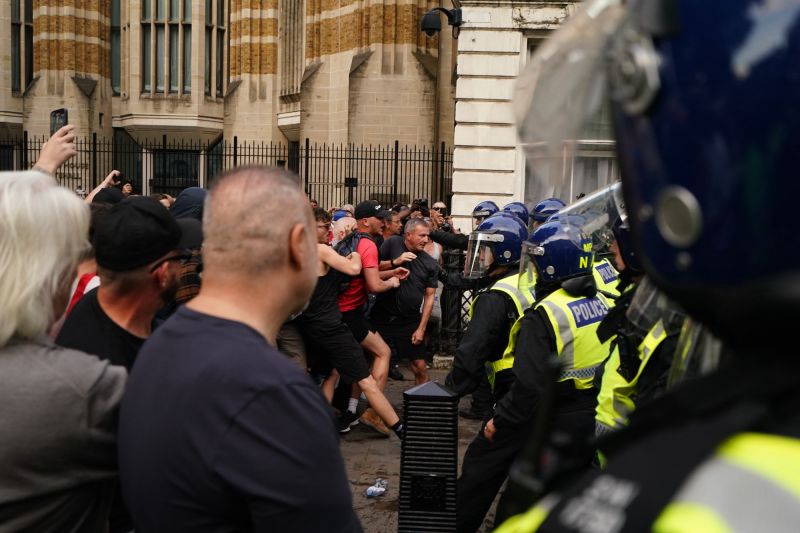The United Kingdom recently witnessed a surge in far-right riots that were primarily fueled by online disinformation, a phenomenon that forcibly pushed the event to the forefront of nationwide consciousness. This unrest was linked to the Southport stabbings that further ignited pre-existing social and political tensions in the country. In analyzing this phenomenon, we crucially delve into the nature of the riots, the role of online disinformation, and the governmental response to these events.
The riots were characterized by violent demonstrations, openly far-right symbolism, and racially charged messages. Large crowds of predominantly young men converged in different cities across the UK, committing acts of public disorder that included vandalization of properties and clashes with police forces. Essentially, these hateful acts and symbols of the far-right ideology amplified an atmosphere of fear and intimidation throughout the UK.
These demonstrations pivoted on the Southport stabbings. The incident, face-value, was a tragedy that resulted in death and injury. However, this event was used as incendiary fuel by far-right groups to light the flame of division. By capitalizing on this event, far-right groups attempted to exploit people’s fear and anger to advance their political agenda.
The role of online disinformation in these far-right riots was significant and all too destructive. In the age of digital communication, the spread of fake news and misinformed narratives is faster and more potent than ever. Far-right groups utilized social platforms as a breeding ground for distorted facts and inflammatory content about the Southport stabbings. This resulted in an amplification of hatred and fear that directly fed into the violent emotions driving the riots.
Specifically, these groups framed the Southport stabbings as purely racially charged attacks, purposefully negating the complex socio-economic factors associated with the incident. Instead of fostering an environment of empathy and constructive dialogue, these online spaces became echo chambers for single-minded and destructive narratives.
Considerably, the UK government’s response to the riots was caught between quelling public disorder and respecting civil liberties, which was a delicate balance. Law enforcement agencies were deployed to control the violent riots, but their efforts highlighted the deeply entrenched racial prejudices, adding fuel to the fire.
Moreover, their response to the spread of online disinformation was equally tricky. While efforts to debunk fake narratives were intensified, the government faced criticism over infringements on free speech. It was a reminder that the path of combatting disinformation is a challenging one, fraught with delicate considerations of civil rights and privacy.
In addition, as a part of their response, several government panels recommended robust synergies between law enforcement agencies, tech companies, and community organizations. They highlighted the need to equip the general public with the necessary information literacy skills to discern between legitimate news and false narratives.
This saga of far-right riots in the UK, spurred by the Southport stabbings, underscores the disruptive power of online disinformation in society. There is a pressing need for a comprehensive strategy that addresses not just the symptoms – violence and public disorder – but also the core disease – the dissemination of hate speech and fake news. By leveraging collaborations across sectors, the goal should be to foster an informed public sphere, resilient to destructive narratives that seek to divide and incite violence.




